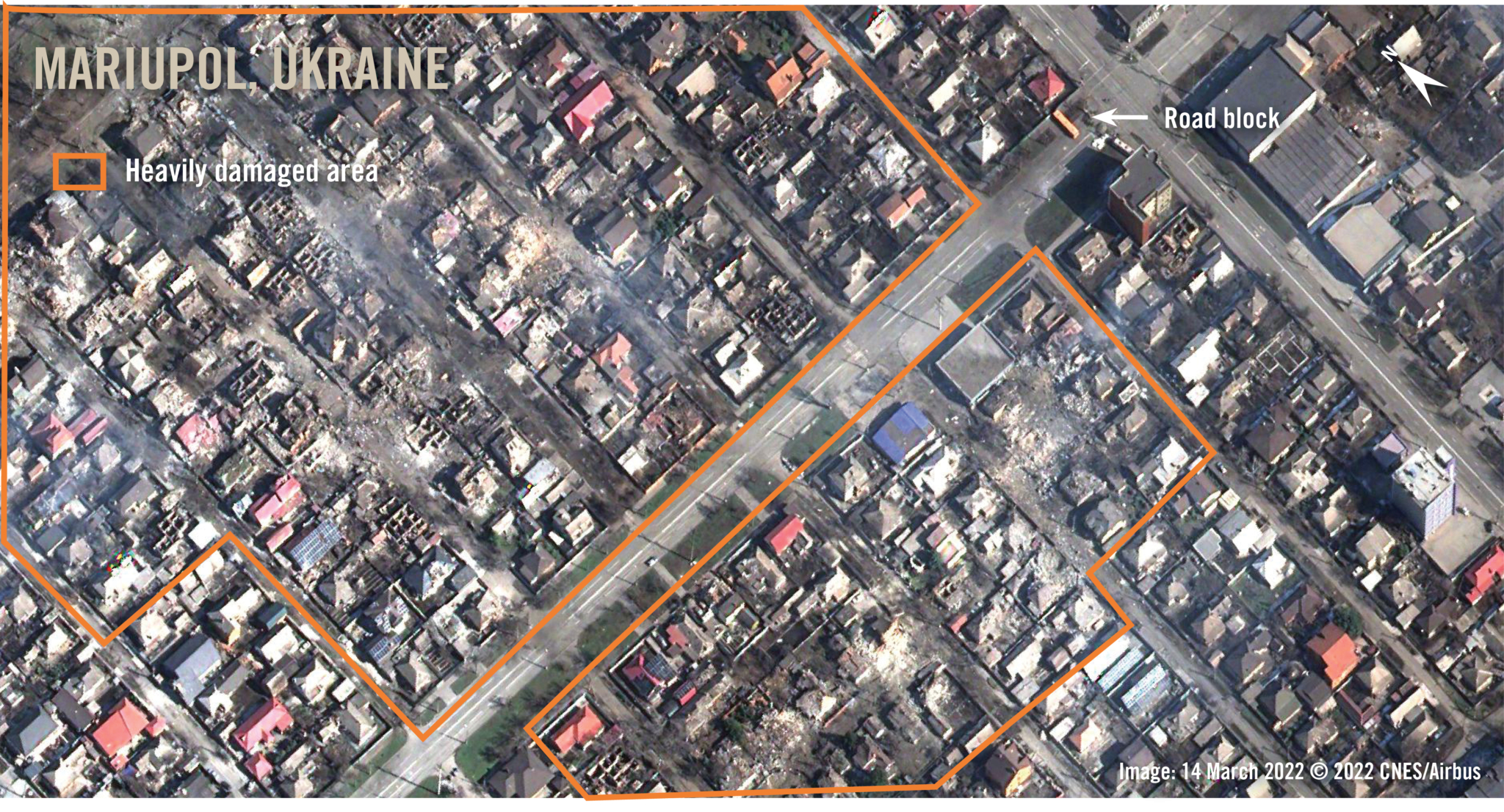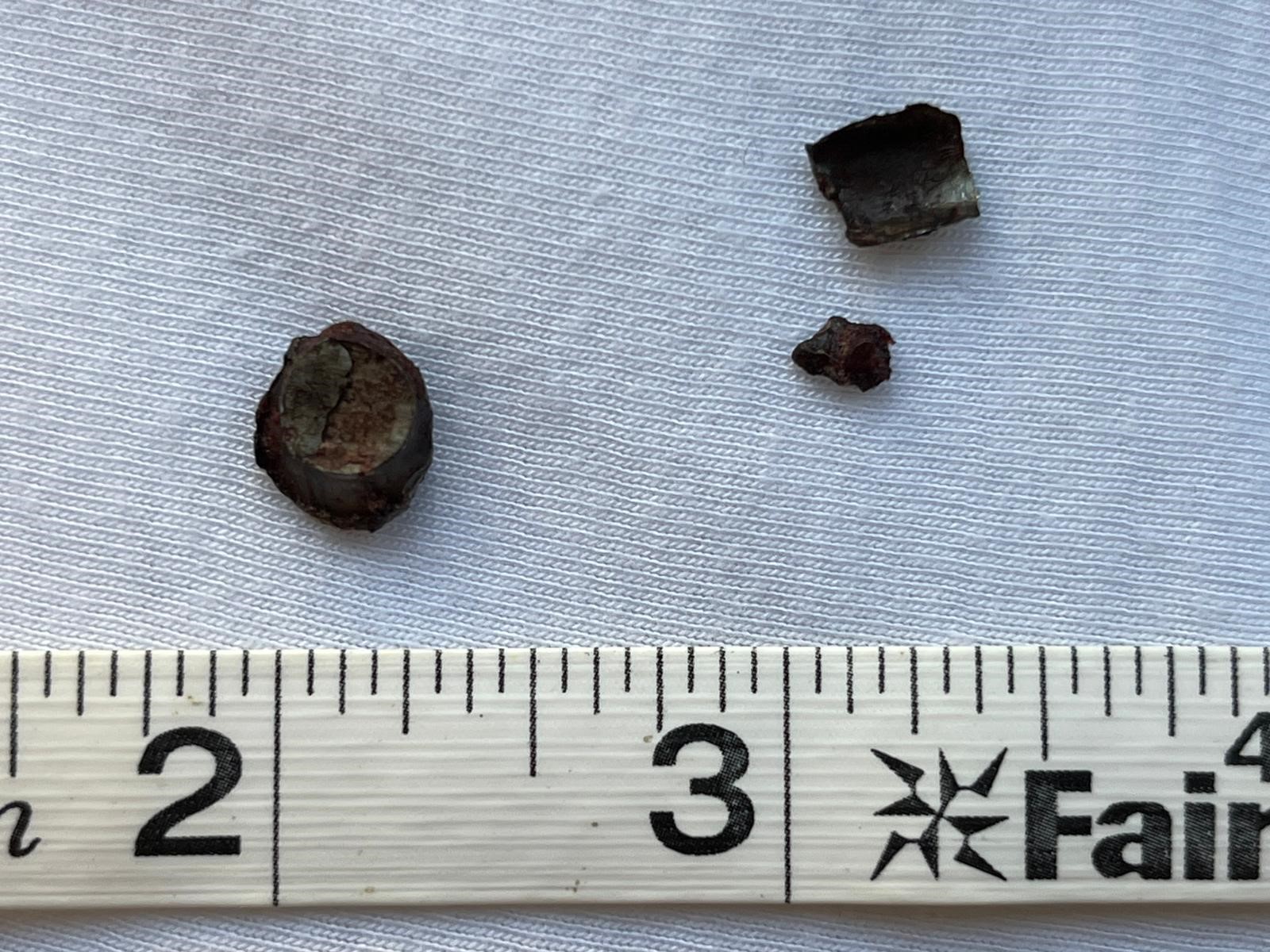The Russian military’s siege warfare tactics in Ukraine, marked by relentless indiscriminate attacks on densely-populated areas, are unlawfully killing civilians in several cities, Amnesty International said today in a new on-the-ground investigation.
For the first time, Amnesty International field investigators in Ukraine have independently verified physical evidence of banned cluster munitions, the use of which violates international law. They have also collected testimony that documents Russian siege tactics, including unlawful indiscriminate attacks, disruption of basic utilities, cuts to communication, destruction of civilian infrastructure, and restrictions on access to medicine and healthcare.
In recent weeks, Russian forces have been using inherently indiscriminate weapons – such as cluster munitions, and inaccurate weapons with wide-area effects such as unguided ‘dumb’ bombs and Multiple Launch Rocket Systems (MLRS) salvos – in attacks on densely-populated civilian areas.
As such, Russian forces’ assaults on towns and cities and wanton destruction of the infrastructure of daily life violates international humanitarian law and international human rights law. Launching indiscriminate attacks which kill or injure civilians also constitute war crimes.
A defining feature of these cruel sieges is Russia’s relentless indiscriminate attacks, which cause utterly devastating harm over time,
Joanne Mariner, Director of Amnesty International’s Crisis Response Program
“For five weeks now, civilians across Ukraine have seen their cities razed day-by-day. Our on-the-ground research has documented how some of society’s most at-risk people are disproportionately suffering as these brutal siege tactics continue.
“Civilians trapped in cities under siege must urgently have access to humanitarian corridors to enable the safe evacuation of all who wish to leave. Humanitarian supplies must also be allowed to reach those who remain behind.”
Amnesty International conducted in-person and remote interviews with people who experienced sieges in five cities, including Kharkiv and Mariupol. Amnesty International’s Crisis Evidence Lab analyzed relevant satellite imagery, and verified videos and photos of the incidents described below. In the coming weeks, Amnesty International will publish further evidence gathered during on-the-ground investigations in Ukraine.

Indiscriminate attacks
Russian forces reached the northern suburbs of Kharkiv in the first days of the invasion, and quickly implemented siege tactics, attempting to encircle the city and firing inaccurate weapons into populated areas.
Amnesty International has documented a broad pattern of unlawful indiscriminate attacks across populated areas in Kharkiv. On 28 February, three MLRS salvos struck the northern part of the city and killed at least nine civilians, including children, and wounded at least another 18.
In an attack on the morning of 4 March, Olesky Stovba, a 41-year-old father, was injured by a cluster munition while buying groceries on Zaliznychna Street in Kharkiv’s Mala-Danylivka district.
He told Amnesty International: “We found some food, and we stood outside the food shop and I heard a great sound. I turned myself and I saw a lot of little fire. It was the height of my knees, 50 metres from me. I fell down, and my wife too, and I felt something hit my right leg… I pulled down my trousers and saw lots of blood.”
Surgeons later removed three fragments from his right groin, calf, and foot. Amnesty International’s Crisis Response weapons investigator examined the physical evidence in person, and confirmed the largest fragment was from either a 9N210 or 9N235 cluster munition.
Kharkiv’s Saltivka district has also been repeatedly targeted during the siege of the city. Amnesty International’s Crisis Evidence Lab verified 22 incidents in the district, showing damage to civilian areas including schools, residential blocks, food markets, and a tram depot, between 27 February and 16 March. Photos from strikes depict remnants of Smerch rockets and cluster munitions across the area.
One man*, who has been running a bomb shelter in Saltivka, told Amnesty International: “It has become my new reality — shootings and bombings, helping old women out of the rubble, no gas, no water, no electricity. Once every three days, we boil ice for water. There are 300 people in the shelter. The majority are older, fragile, [they have] asthma, diabetes. There are some who haven’t left the shelter in three weeks. The biggest problem in Saltivka is that the elderly die for lack of medicine, from shock, from a heart attack. It is important to get them in the ground and bury them, it will get warmer soon and they will decompose.”

In a shelter in Lviv, Amnesty International researchers interviewed a 16-year-old girl who had been evacuated alone from Kharkiv. The organization verified a photo showing the remains of a 220mm Uragan rocket that struck close to her family’s apartment complex, which is near a school.
She told Amnesty International: “The missile struck at night, and I smelled the fire and felt the waves. All of my family, we all live in the corridor of the apartment building from the first day of the war.”
Amnesty International has previously confirmed that cluster munitions killed a child and two other civilians taking shelter at a preschool in Sumy Oblast, and documented an airstrike that killed civilians queueing for food in Chernihiv.
Denial of basic services
Communication with civilians in besieged cities is extremely difficult due to disrupted mobile and internet service. Many people spend the majority of their time in underground bomb shelters with weak or no signal. Access to communications and the internet are essential for safety, and for access to vital information regarding possible evacuation routes.
In the cities of Kharkiv and Izium, compounds containing TV towers were damaged by strikes. Open-source research and satellite imagery analysis by Amnesty International shows that Kharkiv’s TV tower compound was likely damaged twice between 27 February and 17 March, and service outages were reported from 6 March. A building associated with Izium’s TV tower was damaged on 12 March, then further damaged by 20 March. Open-source reports again confirmed disruption to broadcasting. Many older residents rely on television for news and for emergency information from the government.
Amnesty International previously documented how civilians in Izium are on the brink of a humanitarian disaster as Russian forces have bombarded the town since the invasion began.
Impact on at-risk people
The conflict continues to have a significant impact on older people and people with disabilities, which siege warfare further exacerbates.
Alexander Mihta, a 39-year-old in Kharkiv, is diabetic and has severe trouble walking due to the damage the disease has caused to his feet. He drove his wife and daughter to the Polish border, but then had to stay in Ukraine following the implementation of martial law. His apartment building in Kharkiv was struck by Smerch rockets, which smashed steam pipes, cutting heating and flooding the lower floors. Amnesty International’s Crisis Evidence Lab verified 21 photos that confirmed damage to the residential building. Mihta later escaped to a shelter in Lviv with his father.
He told Amnesty International: “The shelling worsened the whole time. I needed food, so I left and went to shop. I have diabetes and I ran when the shelling worsened, and I twisted my leg. I was trying to get to the bomb shelter but couldn’t. I broke six bones, and they [doctors] want to amputate.”
Amnesty International also interviewed a 61-year-old woman* who has stayed in Kharkiv to care for her mother, aged 84, who has dementia and is unable to travel.
She said: “The old people, we are staying. My mother can hardly move… We are from Luhansk and had to get my mother from Luhansk… We left for my daughter’s flat in Kharkiv and we are stuck here. One in every 24 hours we spend outside.
“I talk to my mother. I take her to the toilet and help her undress. I have to always explain to her why we are in Kharkiv, and why we are in the basement. She has dementia and always forgets why she is in the basement, and I have to tell her all day long. She used to have a decent life, she could walk in the garden. Not anymore.”
Older people and people with disabilities, as well as other groups who may face particular risks and challenges when fleeing, should be prioritized for evacuation, as specificied in international humanitarian law. Planning and communication about evacuations and safe humanitarian corridors must also be undertaken in an inclusive way, including by ensuring that information, transportation, and services are all accessible.
ENDS






















